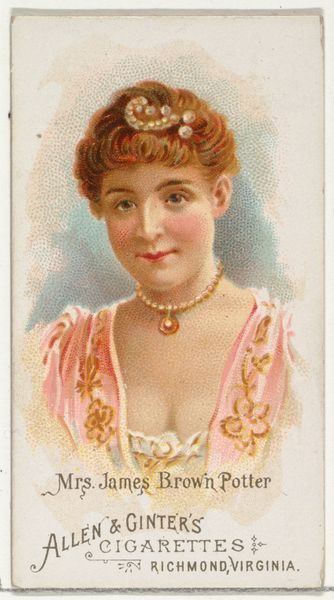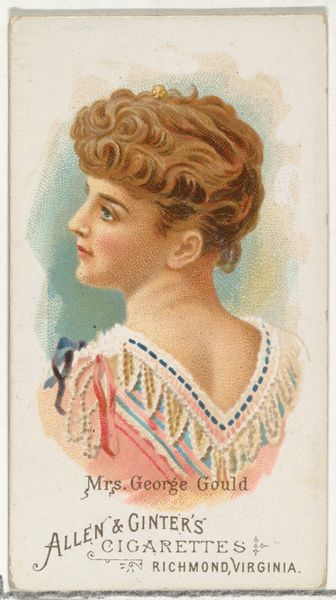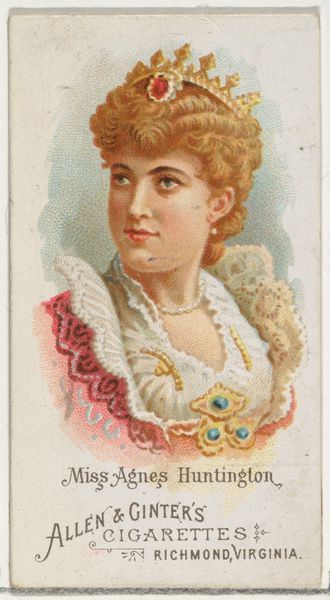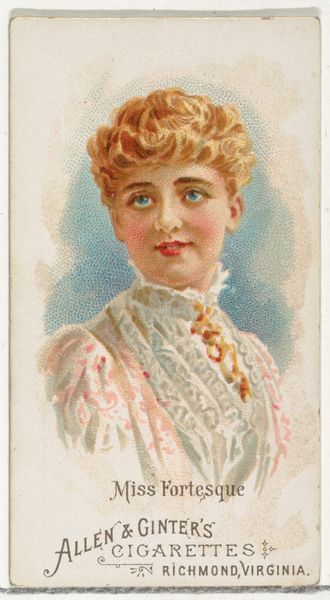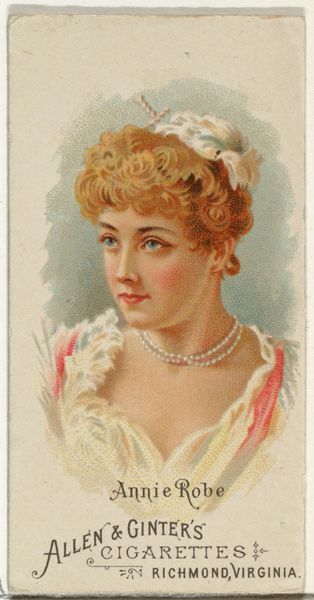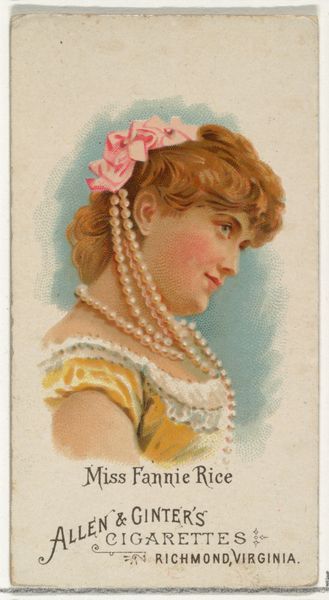
Maud Granger, from World's Beauties, Series 1 (N26) for Allen & Ginter Cigarettes 1888
0:00
0:00
drawing, lithograph, print
#
portrait
#
drawing
#
lithograph
# print
#
caricature
#
figuration
#
academic-art
Dimensions: Sheet: 2 3/4 x 1 1/2 in. (7 x 3.8 cm)
Copyright: Public Domain
Editor: Here we have "Maud Granger," a lithograph from 1888, part of the "World's Beauties" series, meant to promote Allen & Ginter Cigarettes. She has a coy look, like she's in on a secret. It's also fascinating to see portraiture used in advertising so explicitly. How do we understand its function? Curator: It’s really about understanding how the cultural elite endorsed products and constructed social ideals at the time. The commercialisation of beauty, attaching a woman's image to the aspirational appeal of a cigarette brand reveals how companies began to leverage social hierarchies in order to normalise consumption. It suggests that using a product is somehow affiliated with elegance. What do you think this image communicates about women in the late 19th century? Editor: I guess it presents a very specific, refined ideal, probably not representative of most women, so does the artwork exclude them as an audience, perhaps intentionally? It seems like she represents luxury more than just… womanhood. Curator: Exactly! It also raises questions about the very concept of "World's Beauties." Who gets to decide who is beautiful, and for what purpose? In this context, beauty is a commodity, meant to be consumed like the cigarettes themselves. The construction of beauty through commerce becomes a cultural norm that’s spread to people of the time. It presents this woman as the cultural and political image of beauty for people of the time. Editor: I hadn't considered the role of power in deciding what gets to be presented to others as beauty! That definitely shifts my perspective. Curator: These pieces serve as compelling evidence of how cultural values are woven into everyday objects, helping us dissect the societal assumptions they upheld. Editor: Absolutely, I’ll be thinking about who gets to be on these cards the next time I walk down the supermarket aisles.
Comments
No comments
Be the first to comment and join the conversation on the ultimate creative platform.
